The Deschutes National Forest one of the most spectacular places on planet earth. This is a land sculpted by ancient volcanoes, where crystal blue rivers carve their way through primeval forests, towering mountains give way to lush valleys and pristine lakes, and deep below the surface lie vast networks of cavernous wonders.
At over 1.5 million acres, the Deschutes is home to some of the most epic natural scenery on the planet, and is perhaps the most beautiful national forest in America.
Nowhere else in the US will you find a national forest so full of incredible natural diversity as in Bend, Oregon’s Deschutes.
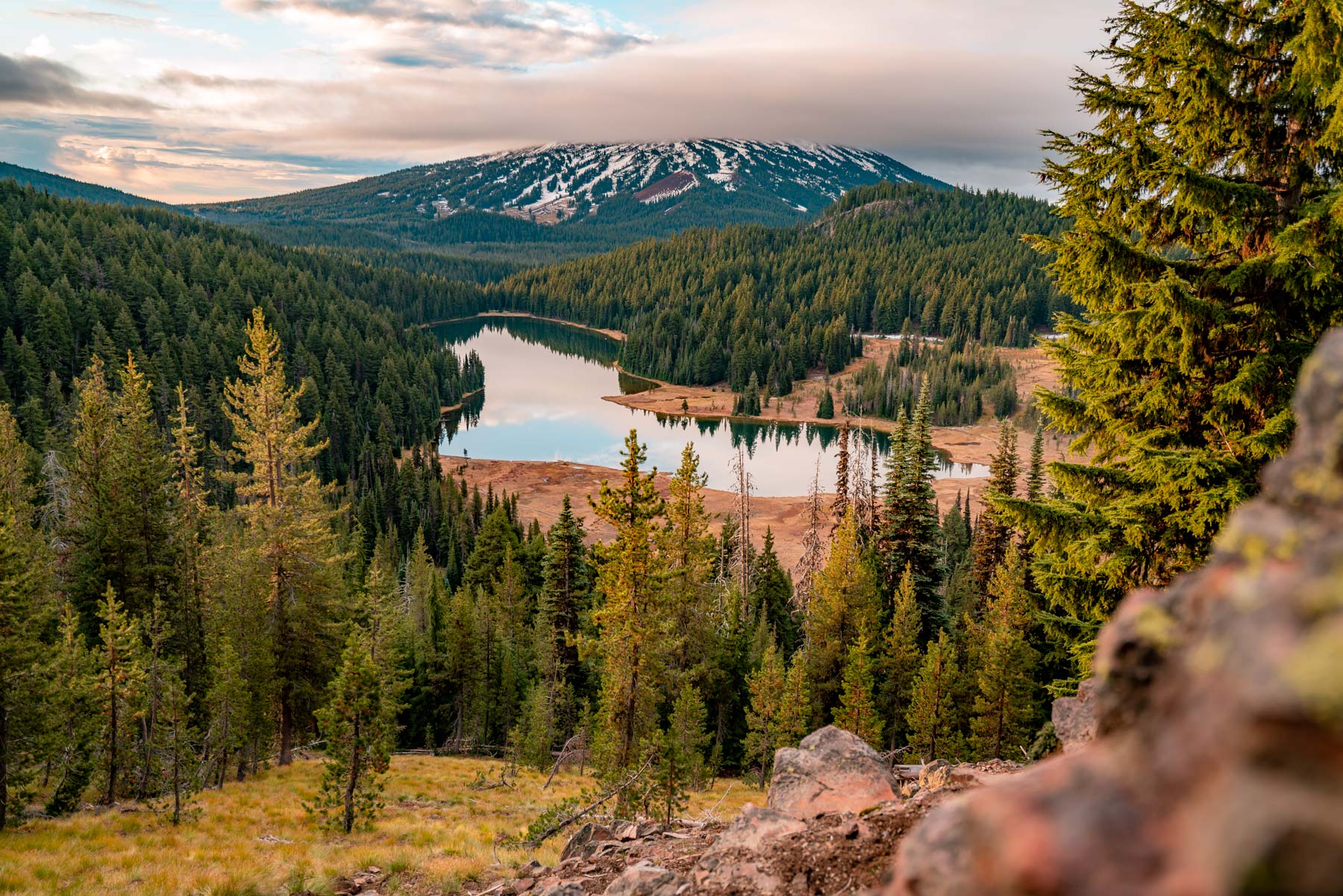
About Our Travels to the Deschutes National Forest
As an Oregon resident for the past five years I’ve been traveling to the Deschutes National Forest near Bend, Oregon just about every opportunity I get. It is a place that always seems to have sunshine (especially coming from Portland).
As someone who *loves* this forest, you can imagine how thrilled I was thrilled to have the opportunity to partner with Visit Bend to create a film on the Deschutes National Forest.
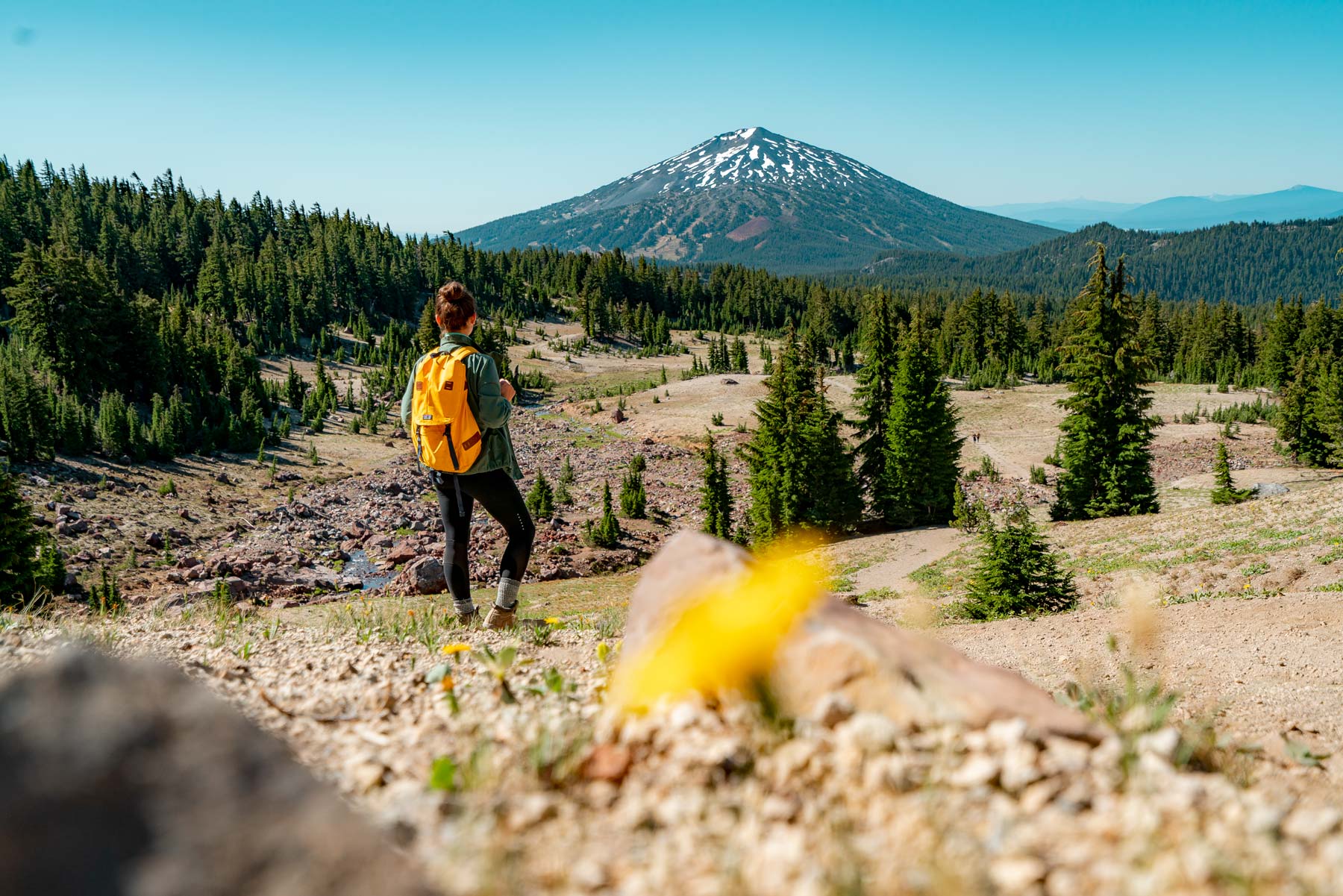
Over the course of a year I (along with my wife & brother) set out to capture the essence and beauty of this forest.
Along the way I hiked nearly every trail and explored so many incredible areas. In this guide I’ll share the best photos, places to go, things to do, and insider tips from my years of adventuring in this epic landscape.
Deschutes National Forest Guide
About the Deschutes National Forest
Situated in central Oregon, the Deschutes National Forest comprises 1.5 million acres of otherworldly beauty. Massive volcanic mountains dominate this extremely diverse landscape of waterfalls, lakes, rivers, forests and more.
Boasting five wilderness areas, six wild and scenic rivers including the forests namesake Deschutes, more than 350,000 acres of old-growth forests, and a national monument, this forest has an incredible amount of recreational opportunities.
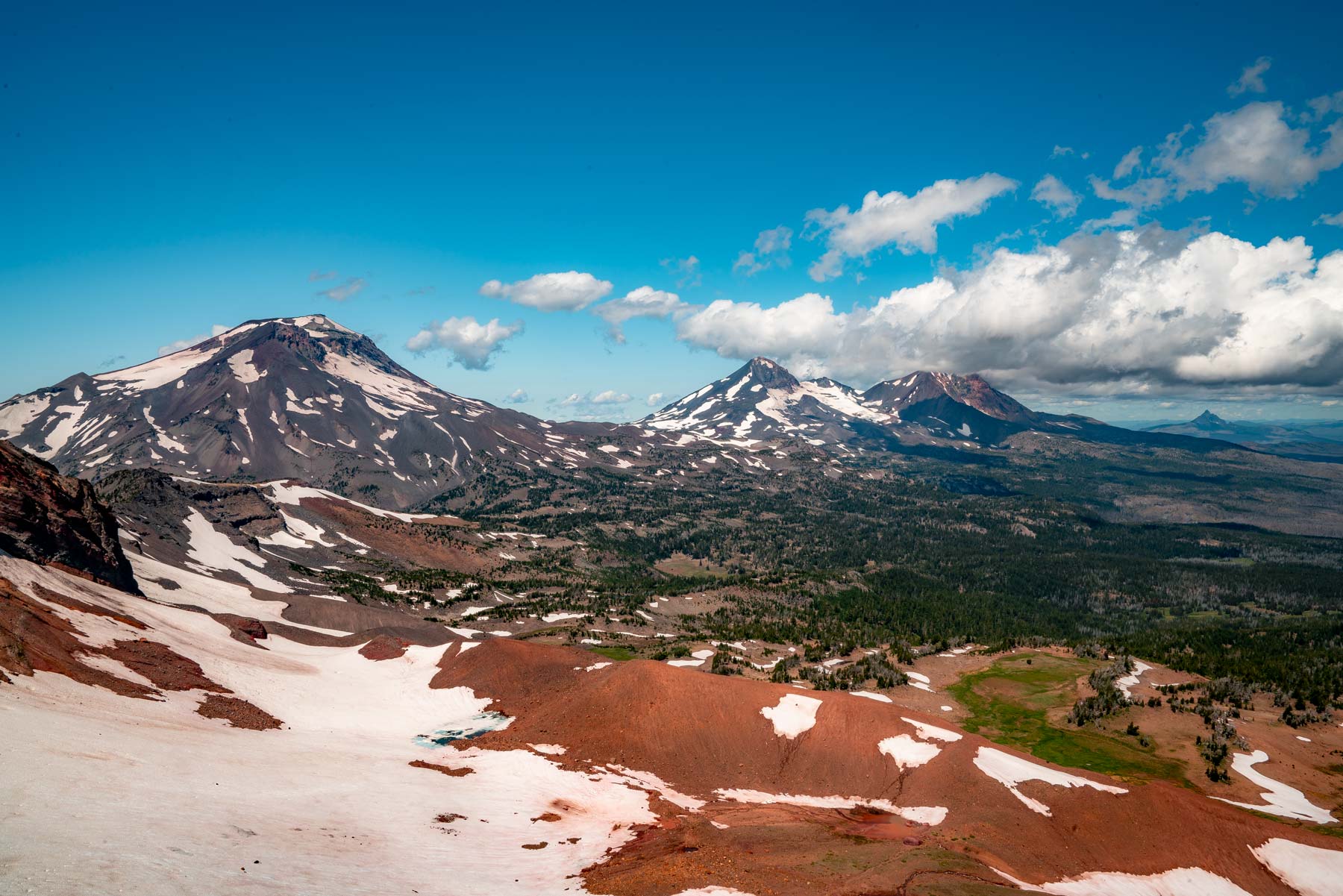
Recreational Opportunities
- Snowmobiling
- Skiing
- Paddleboarding
- Mountain Biking
- Climbing
- Fly Fishing
- OHV Driving (ATVs, Dirt bikes, etc)
- Hiking
- Camping
- Boating (kayaking, canoeing, motors, etc)
- and so much more
Things to Know Before You Visit the Deschutes
Best Map
Map: We use this one.
Entrance Fees
There are no entrance fees to get into the Deschutes National Forest. This is pretty typical for national forests. Some areas are designated fee areas but by and large no fees are required here. If you’d like to be on the safe side you can purchase the America the Beautiful Pass (which can be found at the entrance gates to most national parks or online here). This pass gets you into all National Parks, Forests, Monuments, and more including 2,000 sites for free after a one time $79 fee (annual pass).
Lather up!
Sunscreen: For many of us visiting national forests in the summer means lots of sun. Seriously, some of these parks can zap you if you don’t wear sunscreen. We happen to like this one because it works AND it’s not full of a bunch of chemicals.
Leave No Trace
We’re big fans of Leave No Trace, here at MTJP. Want to learn more? Read about the seven principals of Leave No Trace here.
Mosquitoes
Insect Repellent: You hope not to need it, but you want to have it. We typically bring an Eco-Friendly Insect Repellent with us just in case.
Dogs
Dogs are allowed on national forests including the Deschutes. However, they are not allowed into Wilderness areas.
Where to Stay
Visiting the Deschutes National Forest? If you haven’t decided where to stay (yet) here’s our favorite hotel near the Deschutes.
Details About the Deschutes National Forest
Location: Central Oregon
Closest City: Bend, Sisters
Established: February 22, 1897
Size: 1,253,308 acres
Native Land: Wasco, Warm Springs, Paiute
Entrance Fees: Depends (many areas are free – others are paid)
Deschutes National Forest Map & Location
The Deschuts National Forest is located in Central Oregon over 3 different ranger districts featuring different topography.
Deschutes Ranger Districts
- Bend Fort Rock Ranger District
- Crescent Ranger District
- Sisters Ranger District
Getting to the Deschutes – Directions & Location
The Deschutes National Forest is massive at over 1.5 million acres. Getting to the forest depends on which part you’re trying to access.
Closest Airport (Redmond): RDM – Redmond Municipal Airport (distance – 17 miles from the Bend)
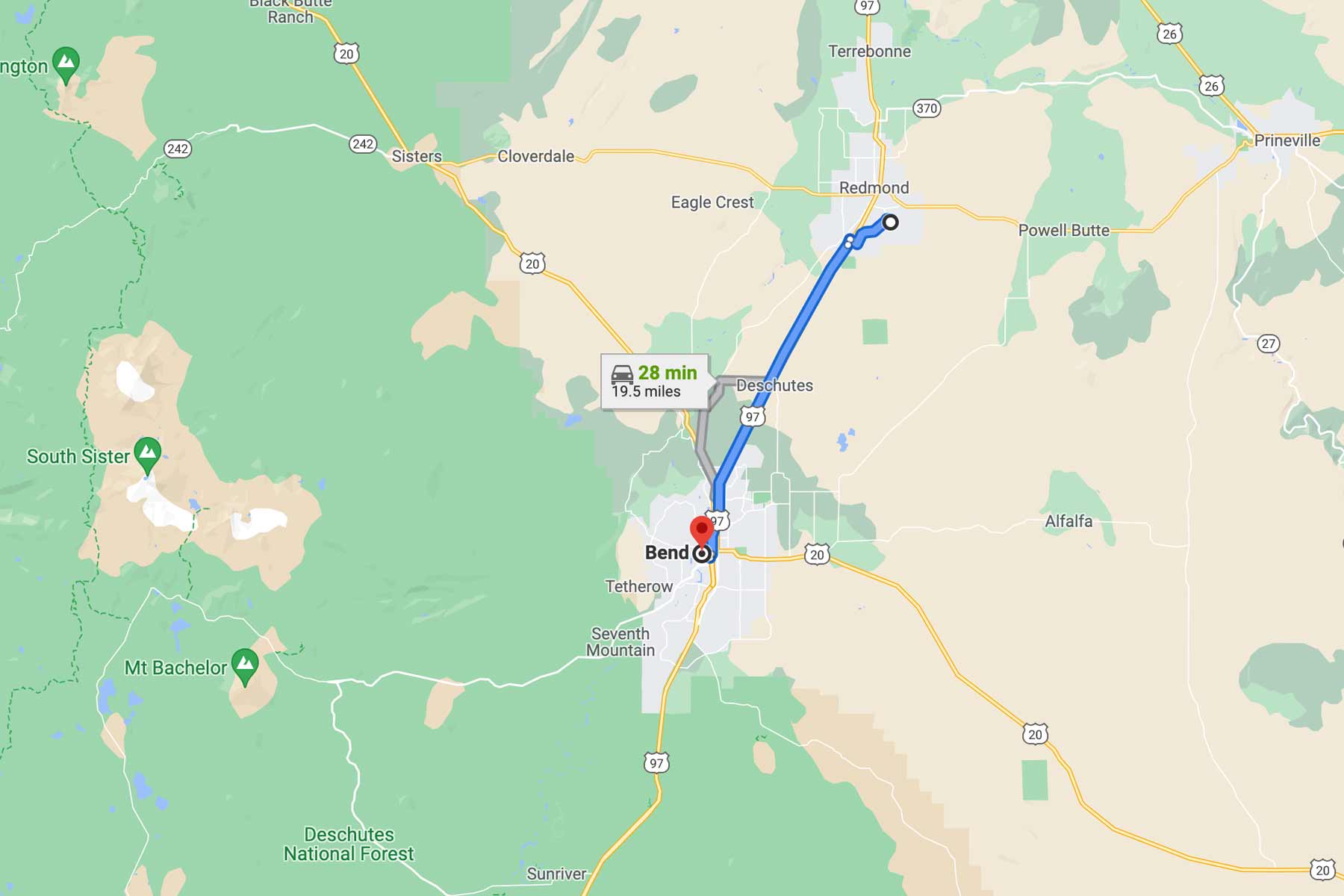
Cheapest Airport (Portland): PDX – Portland International Airport (distance – 160 miles from Bend)

The best way to get to the Deschutes is typically flying into Portland (PDX) and driving the 3 hours to the forest.
I recommend flying into PDX and making the 3 hour drive to Bend which is the best base camp for the forest. Sometimes you can get great flight deals through Redmond but as far as affordability goes (rental car + flights), Portland is your best bet.
Watch the Deschutes National Forest Video
About the Deschutes Video
This film was created by the team at More Than Just Parks (us) in partnership with Visit Bend in an effort to adequately capture the essence of the Deschutes National Forest.
In the making of this film we hiked nearly every trail, traversed most of the roads, rode snowmobiles, went fishing, boated, climbed, camped, biked, and so much more.
The film features the Deschutes National Forest in every season of the year.
RELATED: 14 BREATHTAKING National Park Videos to Inspire Your Next Trip
Deschutes Seasons & Weather
The weather on the Deschutes National Forest is pretty variable with four very distinct (and wonderful) seasons. Spring is rainy but vibrant, summer is hot and dry with the occasional awe-inspiring thunderstorm, Autumn is cool and colorful, and Winter is cold and snowy.
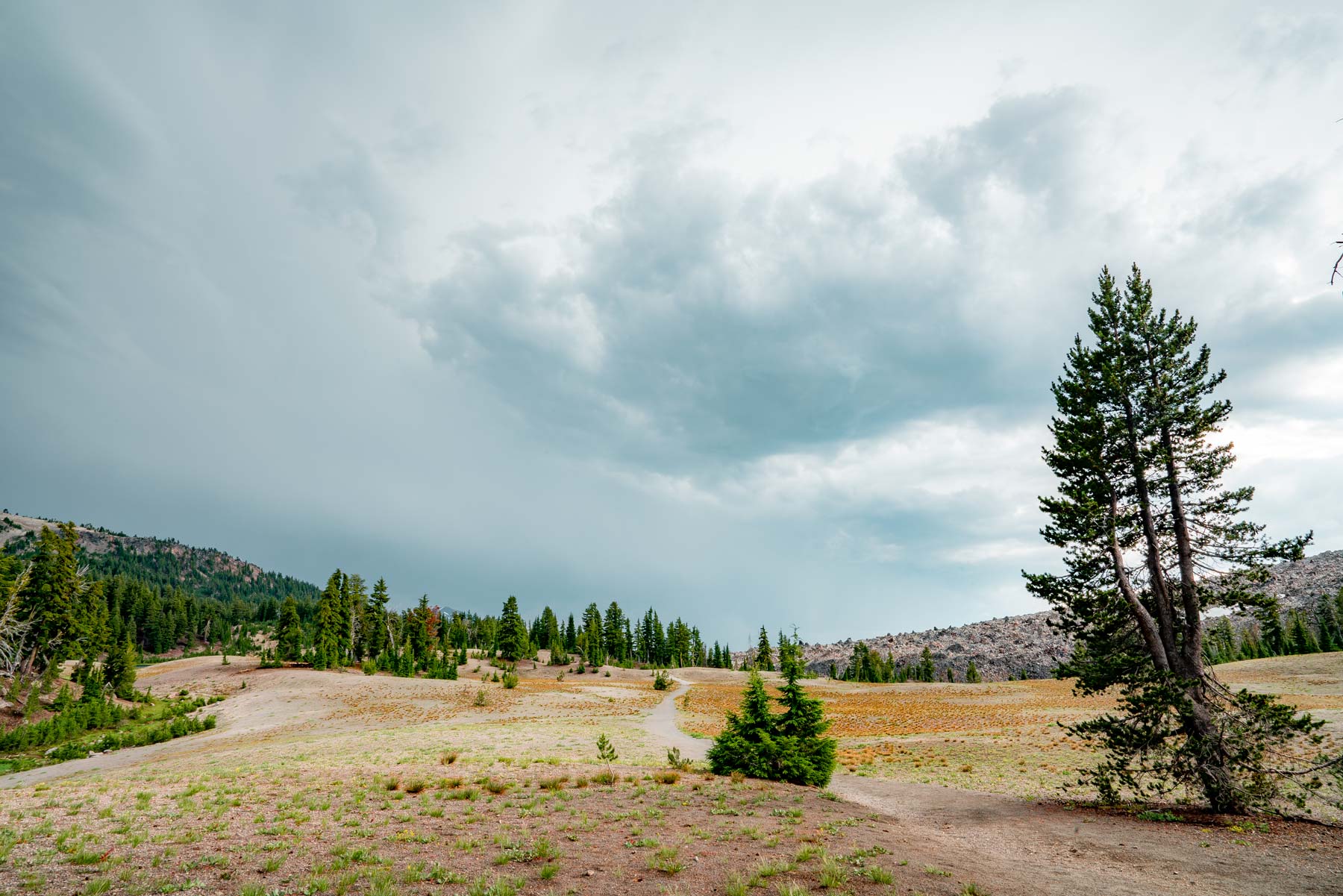
Best Time to Visit the Deschutes National Forest
The best time to visit the Deschutes National Forest is during Summer when the forest is warm to hot, precipitation is minimal, wildflowers are blooming, and access is nearly unlimited.
I recommend visiting July – September for maximum recreational access. With that being said, fall is also lovely on the Deschutes with beautiful foliage especially along the Metolius River.
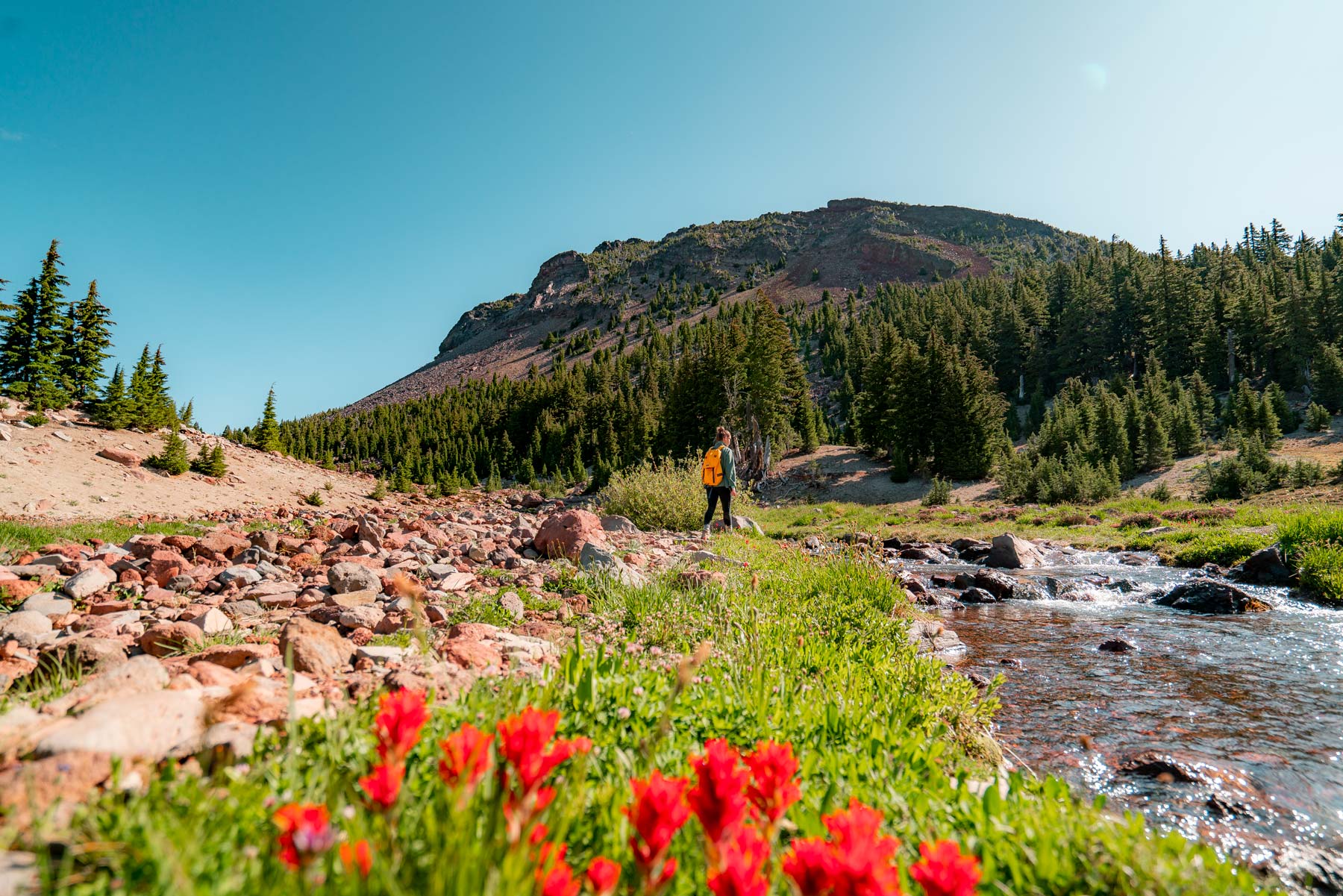
Spring on the Deschutes National Forest
Spring on the Deschutes National Forest is typically pretty snowy with most of the trails snowed in until June or July.
It’s still a great time of year to visit the forest but note that the Cascade Lakes Scenic Byway (along which many of the famous lakes are located) will be closed for much of the season.
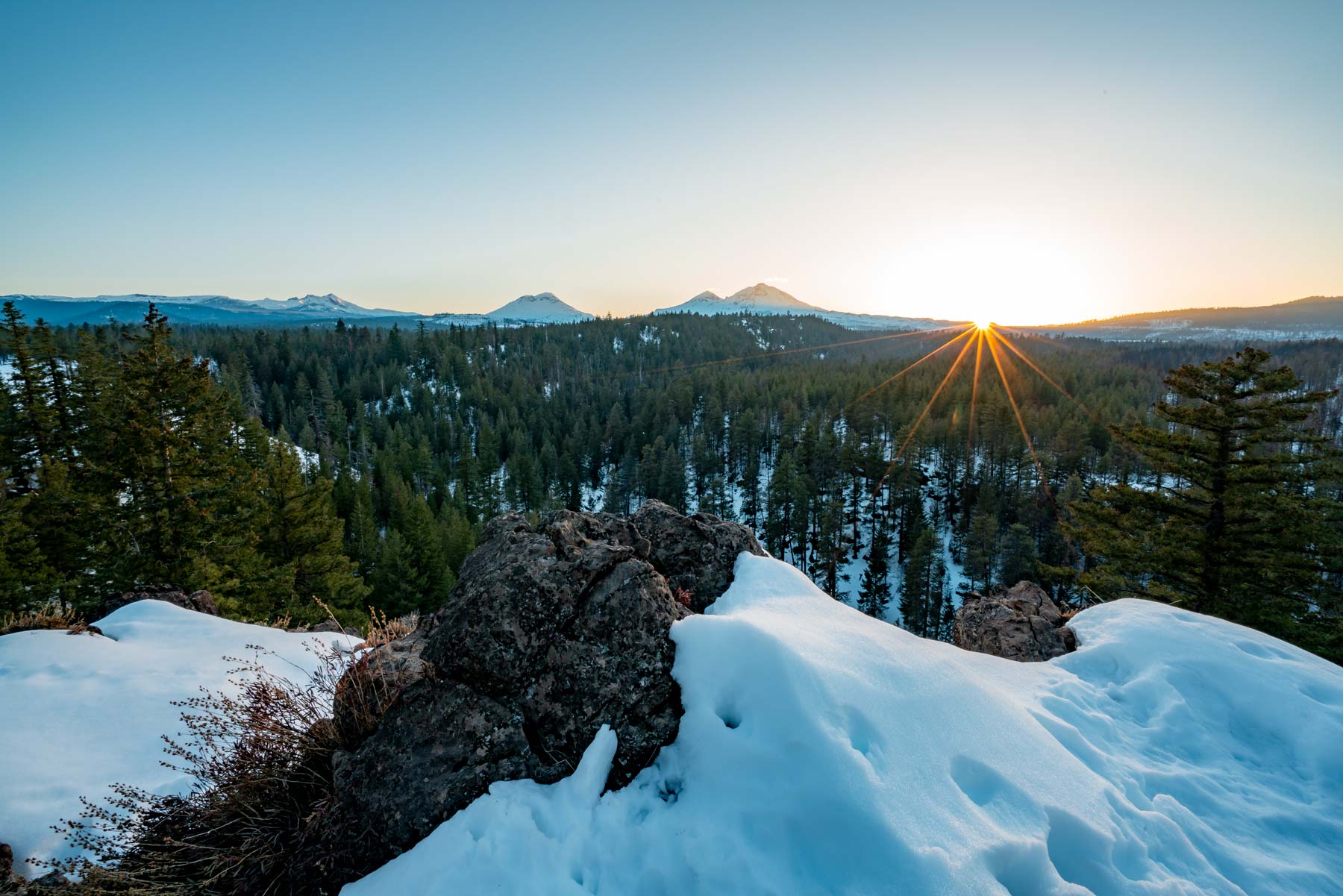
Summer on the Deschutes National Forest
Summer is the best time of year to visit the Deschutes with wildflowers blooming, trails thawed, and spectacular weather. The full arsenal of recreational activities are available during Summer which makes it a great time to visit.
Summer is the most popular time to visit the forest so crowds will be up but still nowhere close to what you will see in the national parks.
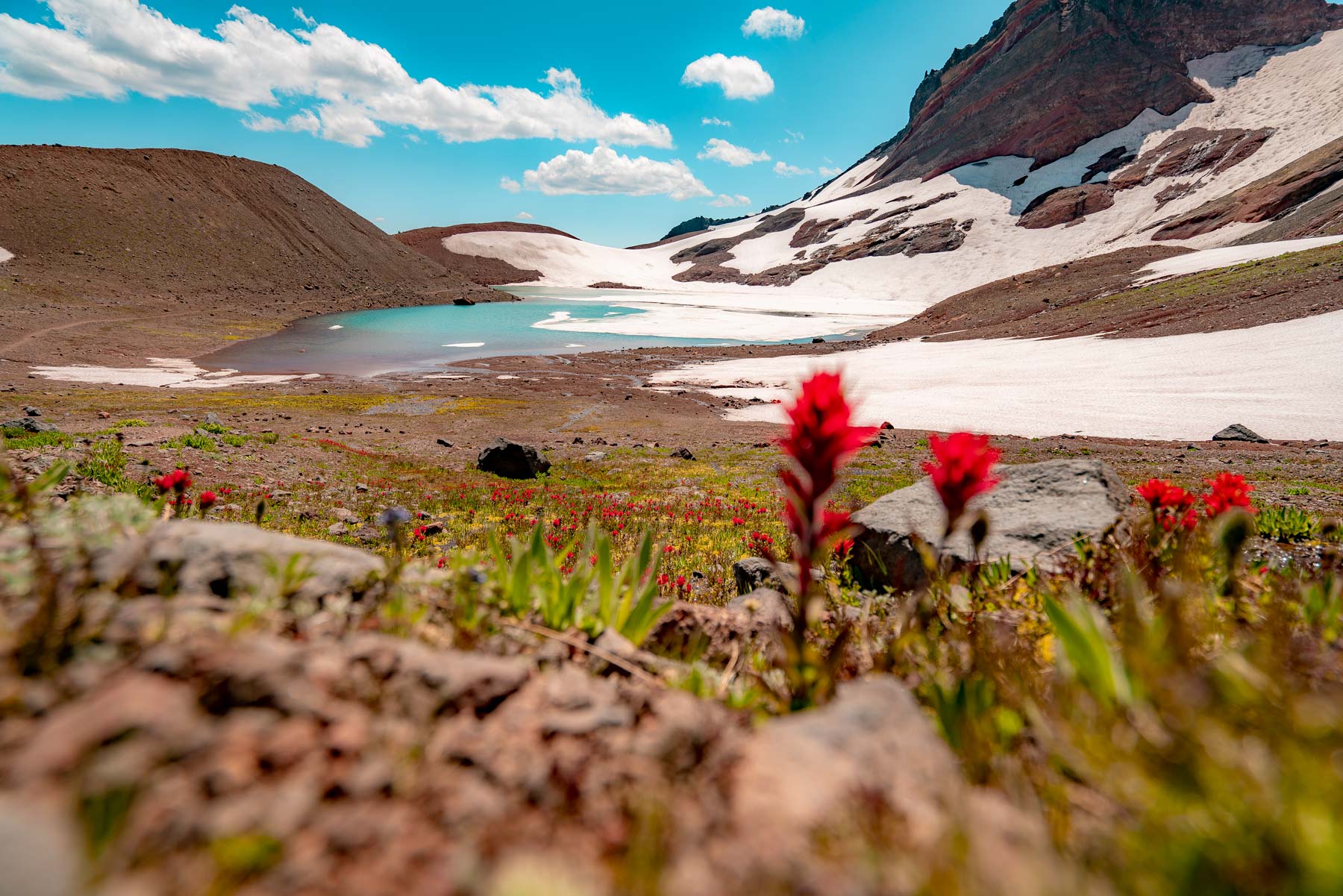
Fall on the Deschutes National Forest
Fall is a great time of year to visit the Deschutes National Forest. The foliage here is unexpectedly (at least to me) striking. The Metolius River area has especially beautiful color.
Temperatures are down and so are crowds as kids return to school and vacation season winds down.
RELATED: 10+ Must See National Parks This Fall (A Stunning Guide)
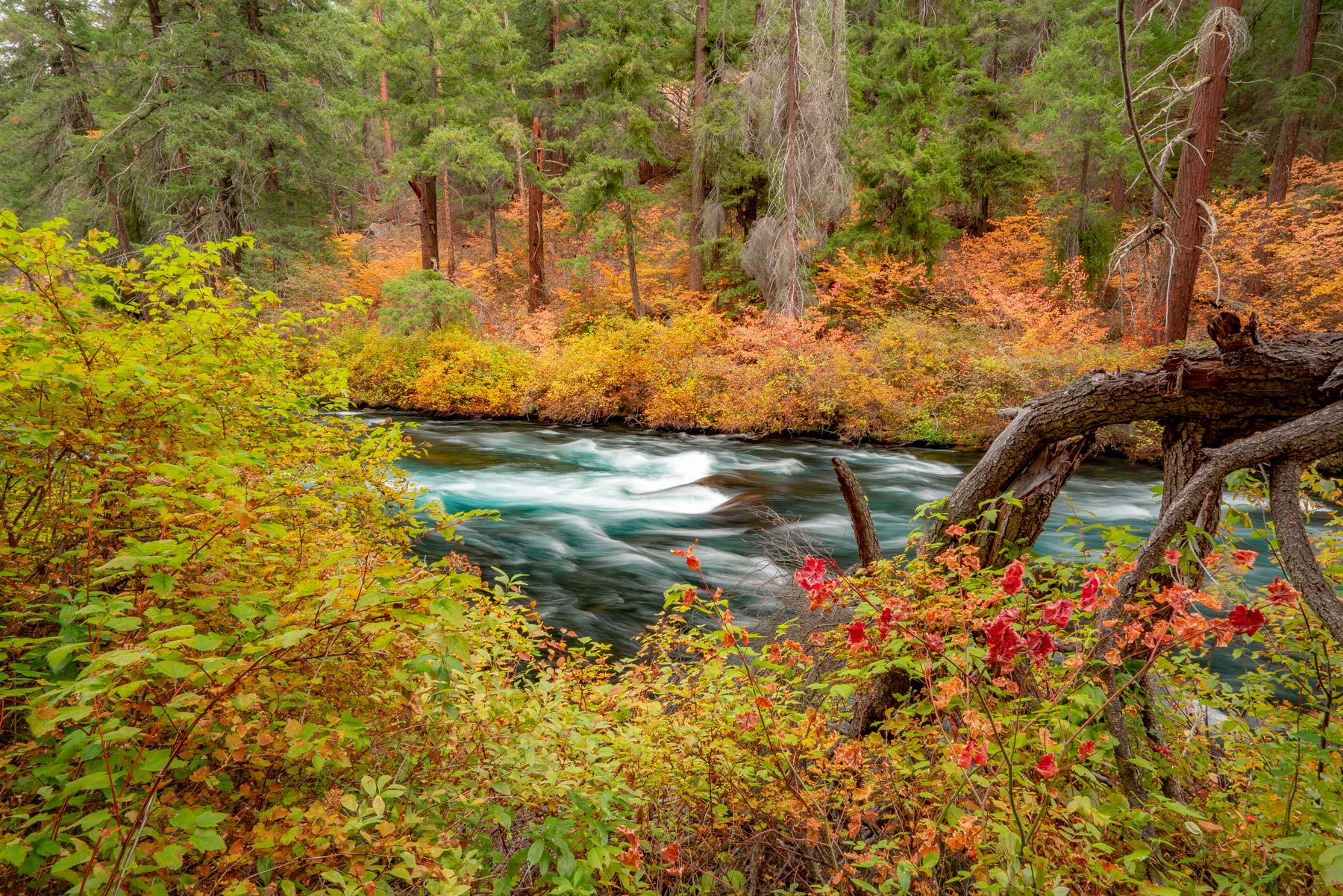
Winter on the Deschutes National Forest
Winter is cold, snowy, and wonderful on the Deschutes National Forest. If you love winter sports then you can find plenty of great winter recreation opportunities all over the forest.
People flock from all over the world to ski and snowboard on the forests top winter recreation destination, Mt Bachelor.
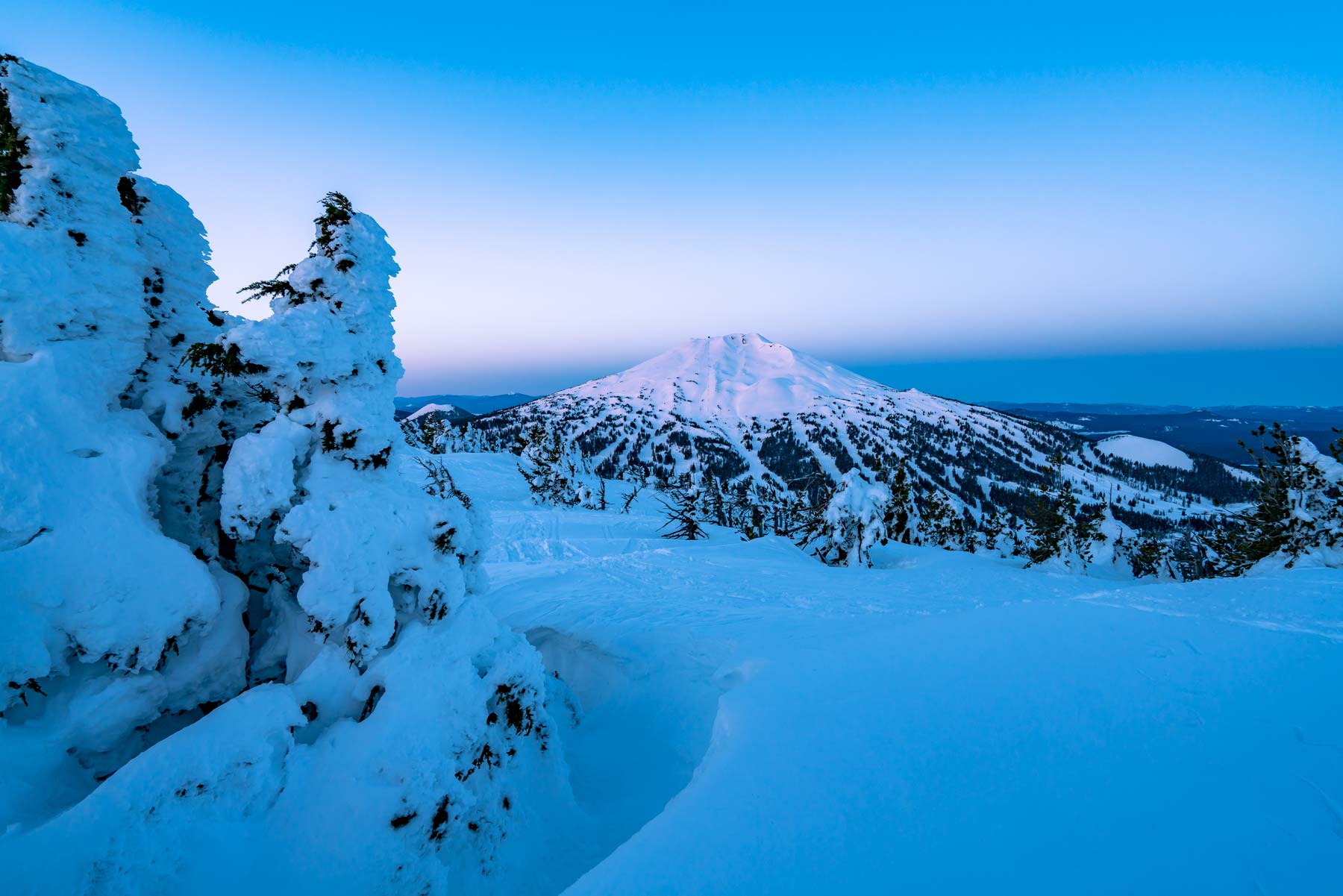
8 Epic Things to Do On The Deschutes National Forest
1. Sparks Lake
Often referred to as the most beautiful lake in the entire state of Oregon and one of the most beautiful in America, Sparks Lake is a must-see destination on the Deschutes National Forest.
Located off the world-famous Cascade Lakes Scenic Byway just past Mt Bachelor, Sparks Lake is the first of many beautiful lakes on the highway. The lake itself was formed by the massive volcanoes that surround it about 10,000 years ago.
Today visitors can hike around Sparks Lake, go fishing, kayaking, canoeing, paddleboarding, camping, and more.

2. Paddleboard Hosmer Lake
I would consider Hosmer Lake as more of a hidden gem as it’s located out of sight (behind Elk Lake) of the famed Cascade Lakes Scenic Byway. The lake is great for fishing, kayaking, and paddleboarding.
It’s really the orientation of Hosmer Lake as well as how shallow the waters are that really lends itself to paddleboarding, kayaking, and fishing. The color of the lake appears a striking greenish-turquoise in the sunlight making it different from all the other lakes in surrounding area.
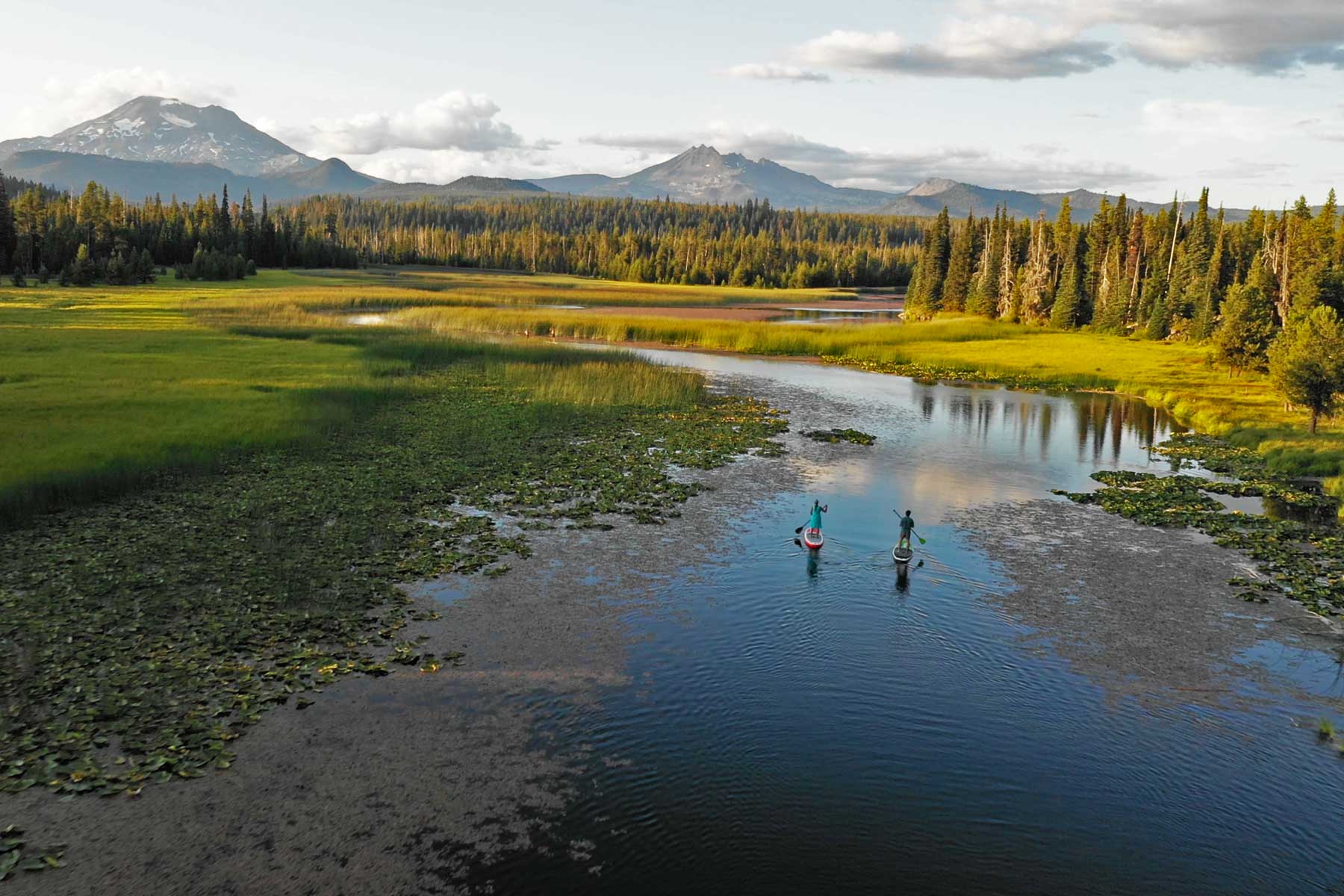

3. Snowmobile to Paulina Peak
One of the coolest, most memorable experiences I’ve had on the Deschutes National Forest was snowmobiling up to Paulina Peak for sunrise in the dead of winter.
Paulina Peak sits at nearly 8,000 feet elevation and is in the perfect position to get spectacular views of the cascades.
The view from the top is absolutely spectacular with a clear view of the cascade mountains as far south as Mt Shasta (in California!) and as far north as Mt Hood.

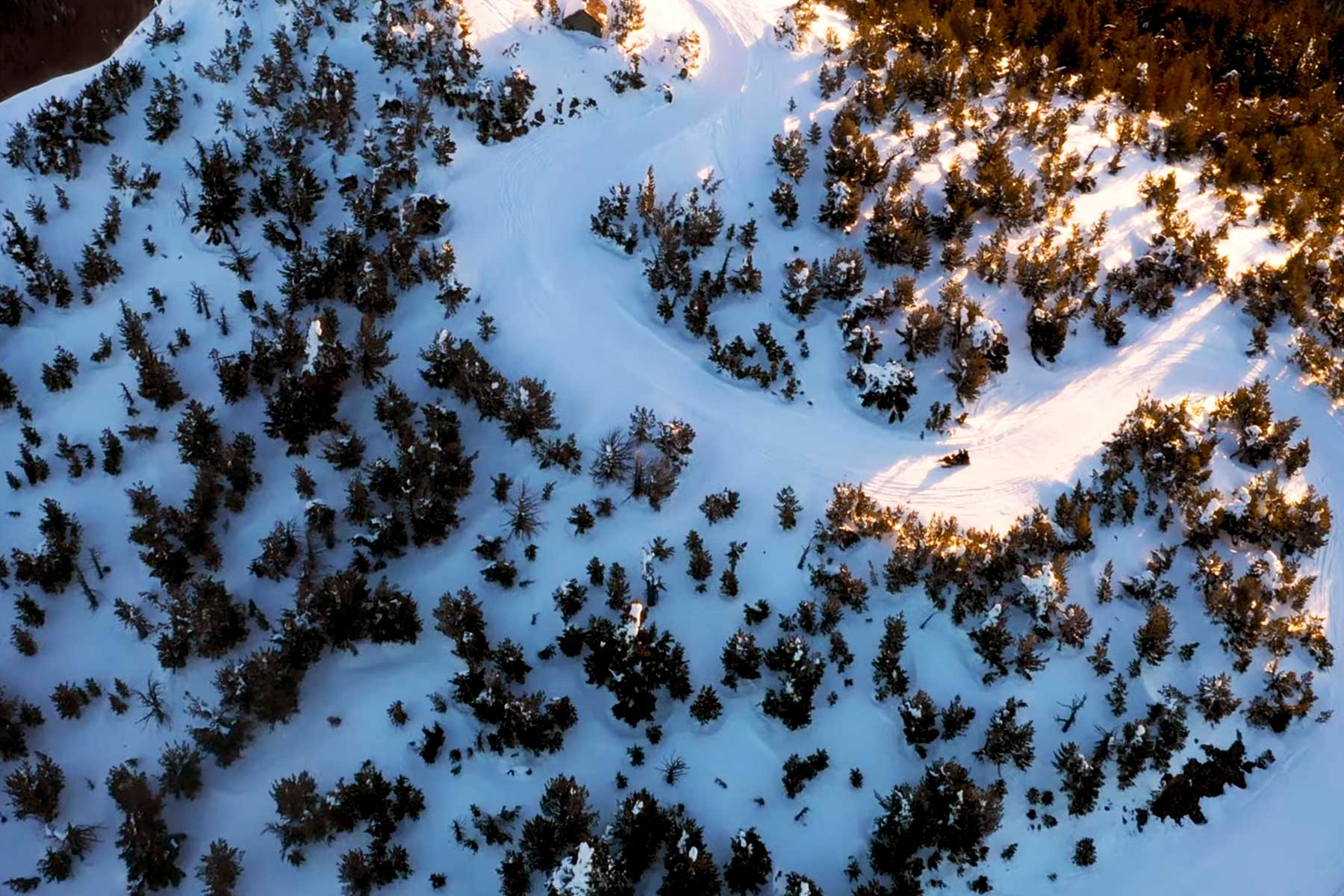
4. Green Lakes Hike
One of the most popular (and most spectacular) hikes in all of the Deschutes National Forest is the Green Lakes Hike which features some of the most striking scenery in the forest.
- Distance: 9.1 miles
- Elevation: 1180 feet
- Time: 4-5 hours
The hike itself is somewhat of a doozy for those not initiated to longer hikes. At 9.1 miles with 1100 feet of elevation gain it takes about 4-5 hours for most folks to complete.
Despite starting with nearly clear blue skies, we experienced a freak thunderstorm with lightning strikes at the top and were forced to take cover and wait out the storm. That being said, be prepared for all weather as systems can move through seemingly out of nowhere.
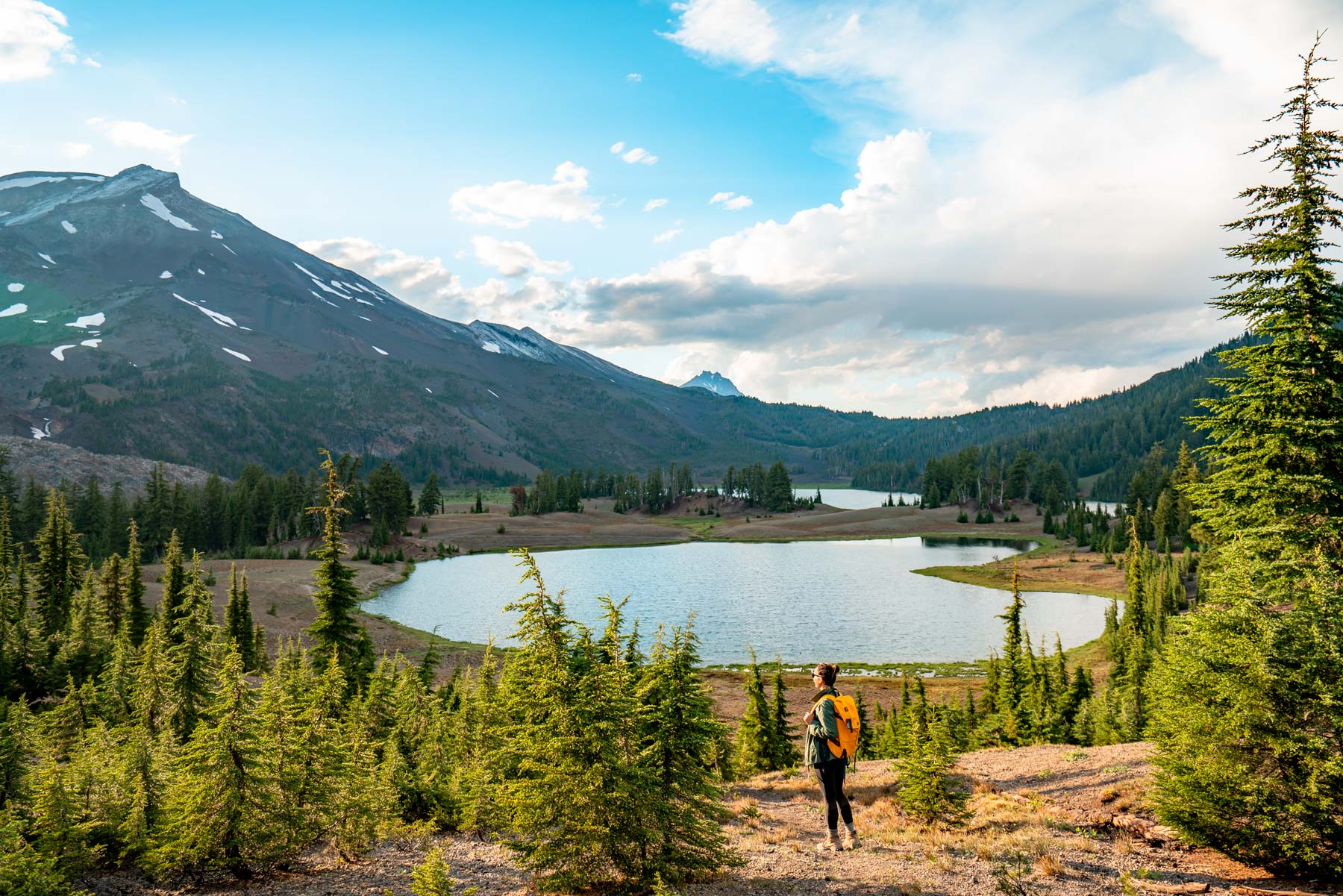

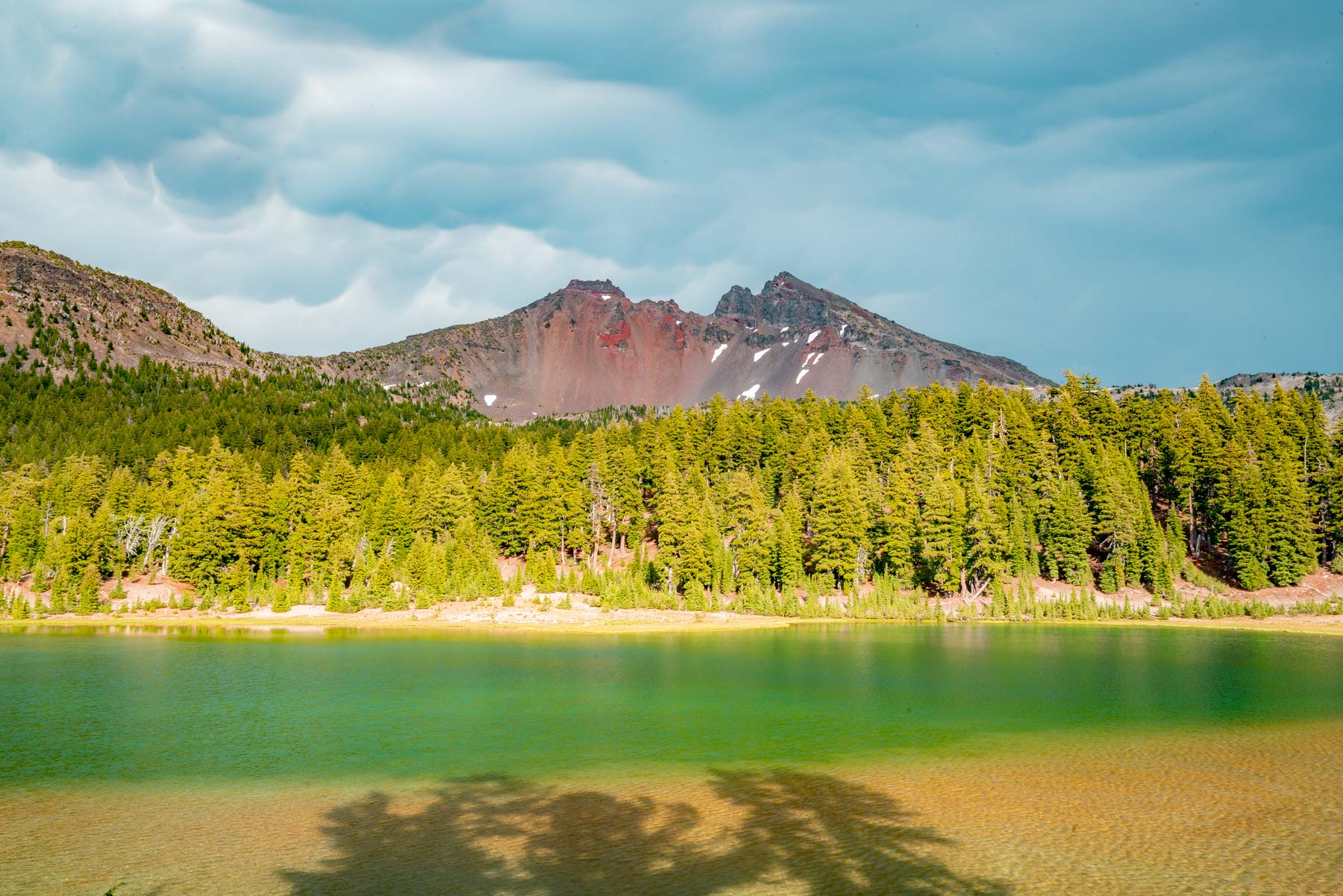
5. Tumalo Falls
At 97 feet tall, Tumalo Falls is possibly the most beautiful and dramatic of all the waterfalls on the forest. Getting to the falls is easy as there’s a parking lot within feet of the main viewing platform.
If you’d like to get a different perspective, follow the path around to the top of the falls where there is another viewing platform.

6. Fly Fishing
With six Wild & Scenic Rivers located on the forest, the Deschutes is home to some of the best fly fishing in the world. The three most popular rivers for fly fishing are the Deschutes River, Fall River, and Metolius River.
There are great populations of wild fish supplemented with hatchery fish on these rivers.
Fish species include:
- Brook Trout
- Rainbow Trout
- Brown Trout
- Whitefish
Anglers are out year round even in the snow making the Deschutes a fisherman’s paradise. The Fall River is a popular winter spot for those looking to get their snowy fix in!
In order to fish legally, anglers must obtain an Oregon Fishing License.
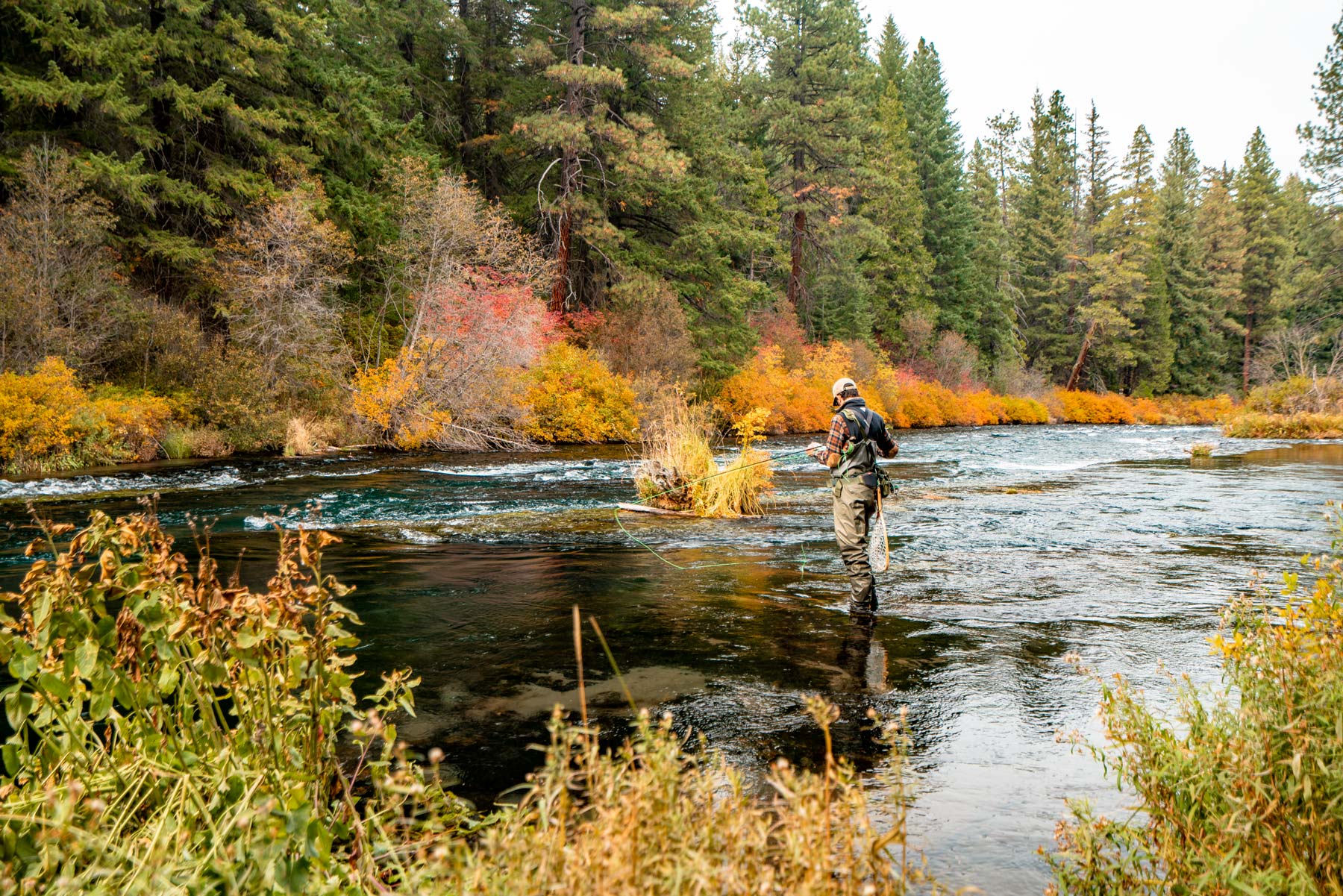

7. No Name Lake
One of the most beautiful hikes with incredible payoffs on the Deschutes is the hike to No Name Lake. This along with the Green Lakes Hike are my personal favorite on the forest.
- Distance: 6 miles (if using the 4WD shortcut road)
- Elevation: 1400 feet
- Difficulty: Moderate – Challenging
This is one of those hikes that as soon as you get to to the top you realize what all the hype is about. Panoramic views of No Name Lake and the mighty cascade mountains surround you at the top of the hike. One feels as though they are amongst the clouds up here.
Make sure to hike past No Name Lake to get the full breadth of the panorama. This trail does not typically thaw out until July.
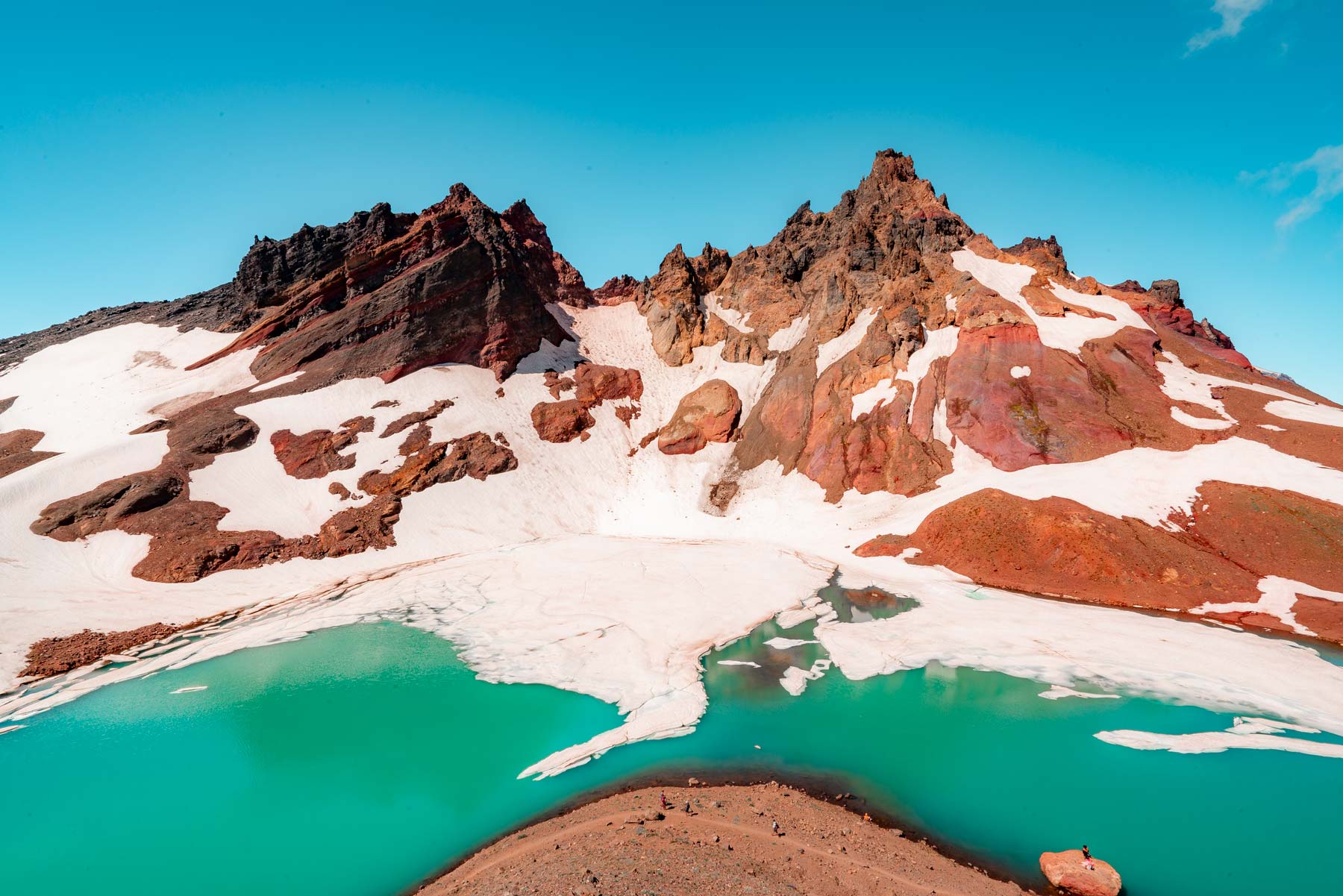


8. Lava River Cave
At 5,211 feet long the Lava River Cave is the longest (of many) lava tubes in the state of Oregon. While technically in the Newberry Crater National Volcanic Monument (located within the boundaries of the Deschutes) this is definitely worth a stop!
At the entrance to the cave, rangers give visitors a brief instruction session informing cave goers of how to prevent the spread of White Nose syndrome in the bat population and basics for protecting the cave itself.
Make sure to dress warmly and bring a flashlight and/or headlamp! If you don’t have one you can rent them from the staff on site.

Where to Stay on the Deschutes
Deschutes Camping & Campgrounds
The Deschutes National Forest is home to 70 developed campgrounds with hundreds individual campsites. The forest also has three cabins for rent.

Bend/Sunriver/La Pine Area
- Big River Campground/Big River Group Bull Bend Campground
- Fall River Campground
- *Fall River Guard Station
- McKay Crossing Campground
- Prairie Campground
- Pringle Falls Campground
- Wyeth Campground
Cascade Lakes Area
- Big Cove Boat-In Campground
- Cow Meadow Campground
- Crane Prairie Campground
- Cultus Lake Campground
- Devils Lake Campground
- Elk Lake Campground
- Gull Point Campground
- Little Cultus Campground
- Lava Lake Campground
- Little Fawn Campground
- Little Lava Lake Campground
- Mallard Marsh Campground
- North Davis Creek Campground
- North Twin Lake Campground
- Point Campground
- Quinn River Campground
- Reservoir Campground
- Rock Creek Campground
- Sheep Bridge Campground
- Soda Creek Campground
- South Campground
- South Twin Lake Campground
- Todd Lake Campground
- West South Twin Campground
Crescent Area
- Contorta Flat Campground
- Contorta Point Group Campground
- Crescent Creek Campground
- Crescent Lake Campground
- *Crescent Lake Guard Station
- East Davis Lake Campground
- Princess Creek Campground
- Spring Campground
- Sunset Cove Campground
- Trapper Creek Campground
Fort Rock Area
Sisters-Metolius Area
- Allen Springs Campground
- Allingham Campground
- Blue Bay Campground
- Camp Sherman Campground
- Candle Creek Campground
- Cold Springs Campground
- Driftwood Campground
- Gorge Campground
- *Green Ridge Lookout
- Indian Ford Campground
- Jack Creek Campground
- Lava Camp Lake Campground
- Link Creek Campground
- Lower Bridge Campground
- Lower Canyon Creek Campground
- Monty Campground
- Perry South Campground
- Pine Rest Campground
- Pioneer Ford Campground
- Riverside Campground
- Scout Lake Campground
- Smiling River Campground
- South Shore Campground
- Three Creek Lake Campground
- Three Creek Meadow Horse Camp
Newberry National Volcanic Monument
Lodging On the Deschutes
There are 4 resorts and one lodge located on the Deschutes. They include:

Driving on the Deschutes
Some forests are designed for 4WD vehicles due to the sheer amount of roads they have to maintain and their relative remoteness. The Deschutes is more of a mix.
There are plenty of 2 wheel drive roads in the forest that will take you to nearly all of the most popular attractions including the Cascade Lakes Scenic Byway and Newberry Crater National Volcanic Monument.
There are also great 4WD opportunities as well but I wouldn’t say 4WD is a must on the forest! If you’re driving in the winter be sure to pack chains!
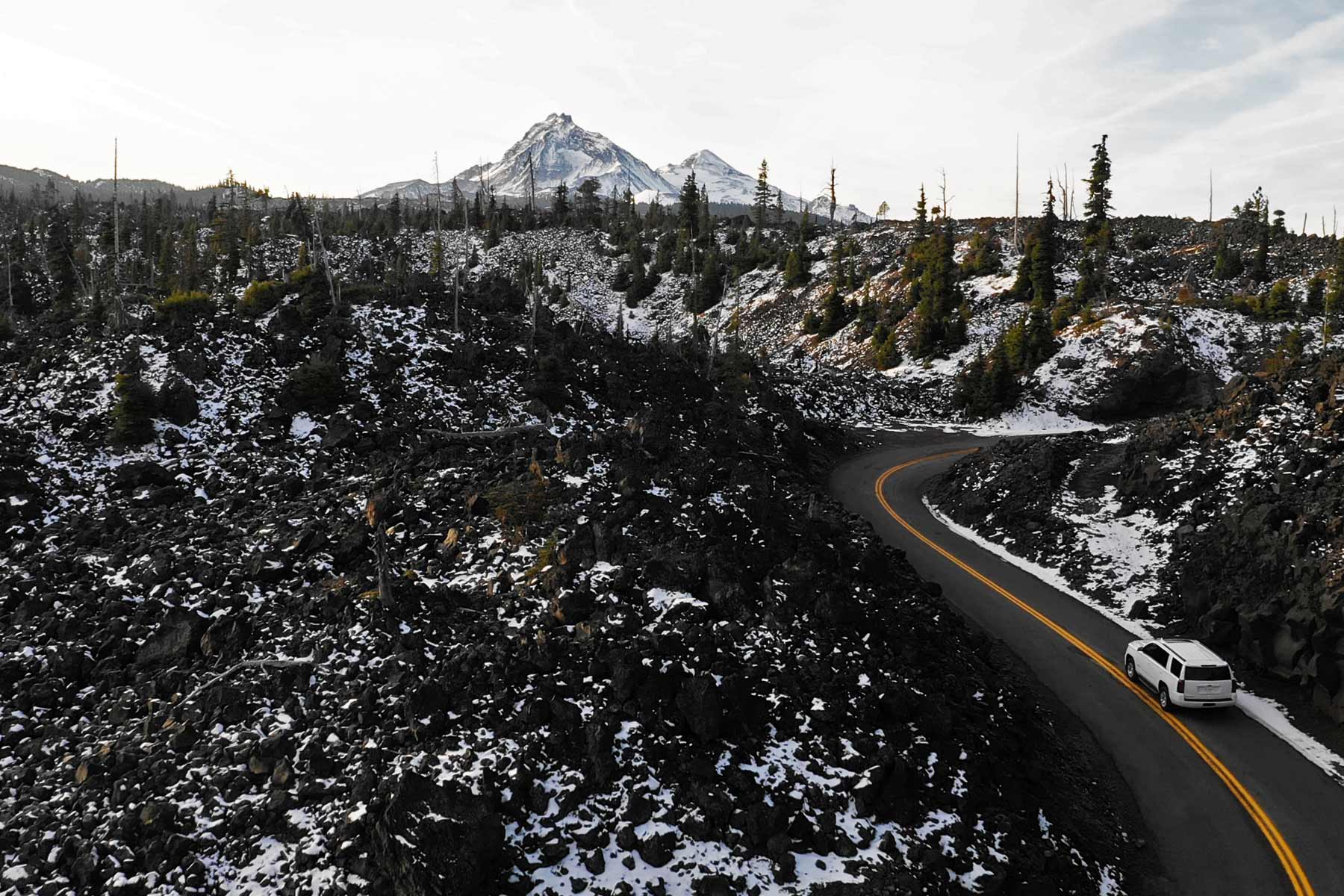
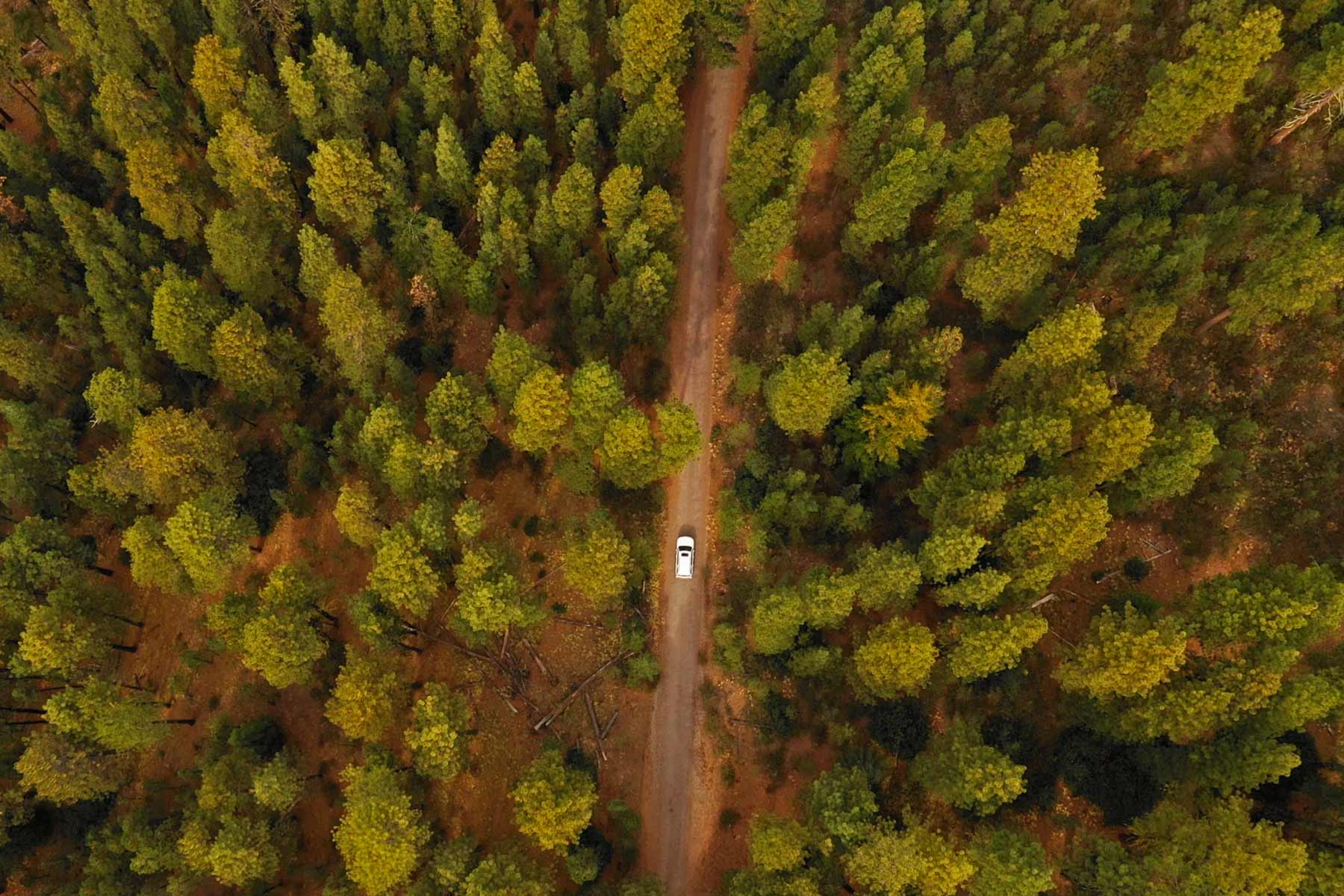
Deschutes National Forest Photos
Photos of the Deschutes.
























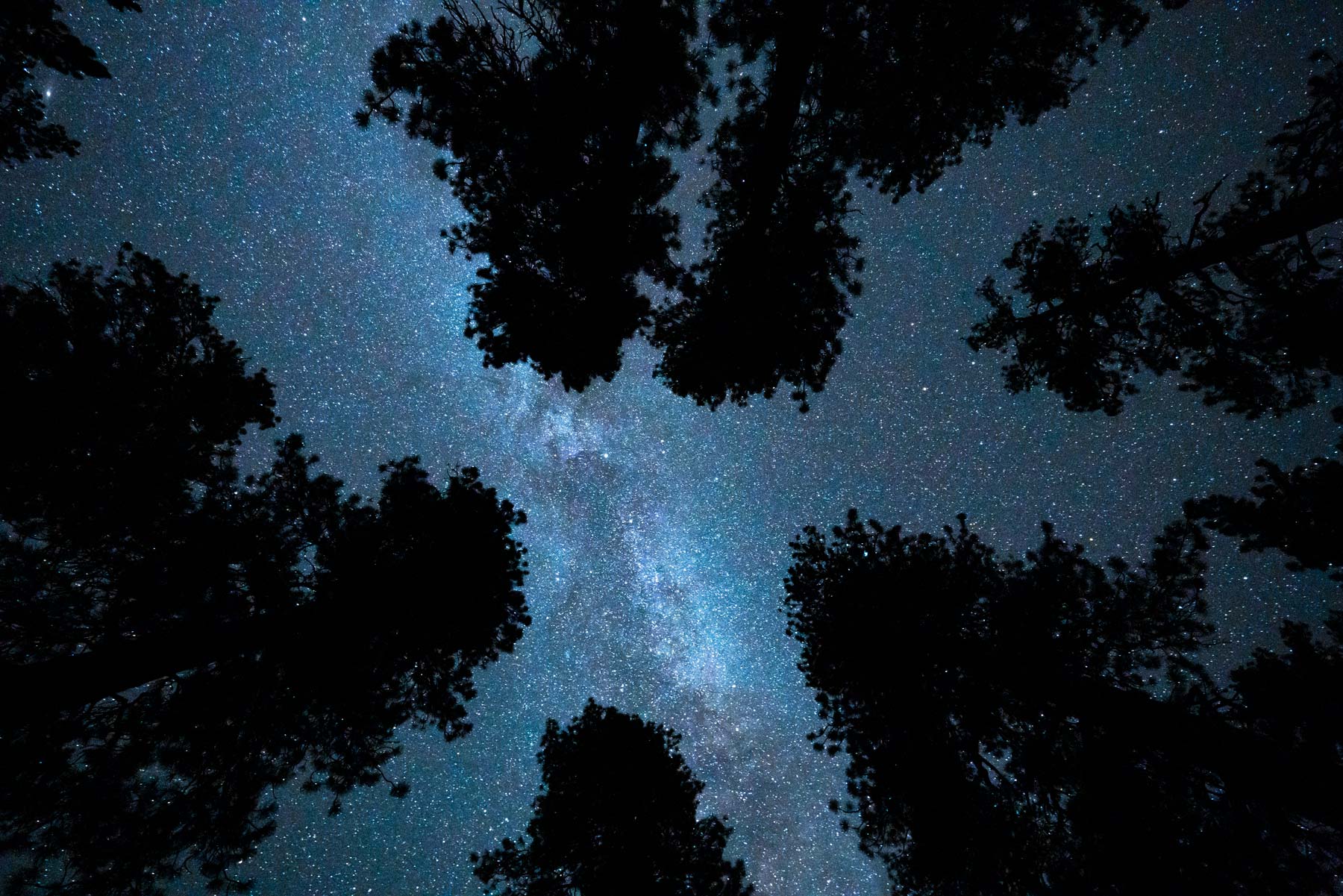





Nearby Attractions
- Crater Lake National Park
- Willamette National Forest
- Smith Rock State Park
- Bend, Oregon
Summary | Leave us a Comment!
That’s a wrap folks! Hopefully you feel like you’ve got a good handle on your next trip to the Deschutes. Please leave me a comment below and let me know if you have any questions or comments.
Hope to see you on the trails sometime soon!
Here’s Some Helpful Related Posts
- 10 EPIC Oregon National Parks You’ll Love (+ Beautiful Photos)
- National Forest vs National Park (Here’s the Difference)
- 3 EPIC Washington National Parks Ranked World’s Best (+ Photos)
- UTAH National Parks ROAD TRIP: An Epic Guide + Overlooked Spots
- ALL 63 National Parks Ranked from Best to Worst 2021
- 10 Best National Parks Road Trips in America
deschutes national park, hiking deschutes park, bend national forest, oregon national forest, deschutes trails,
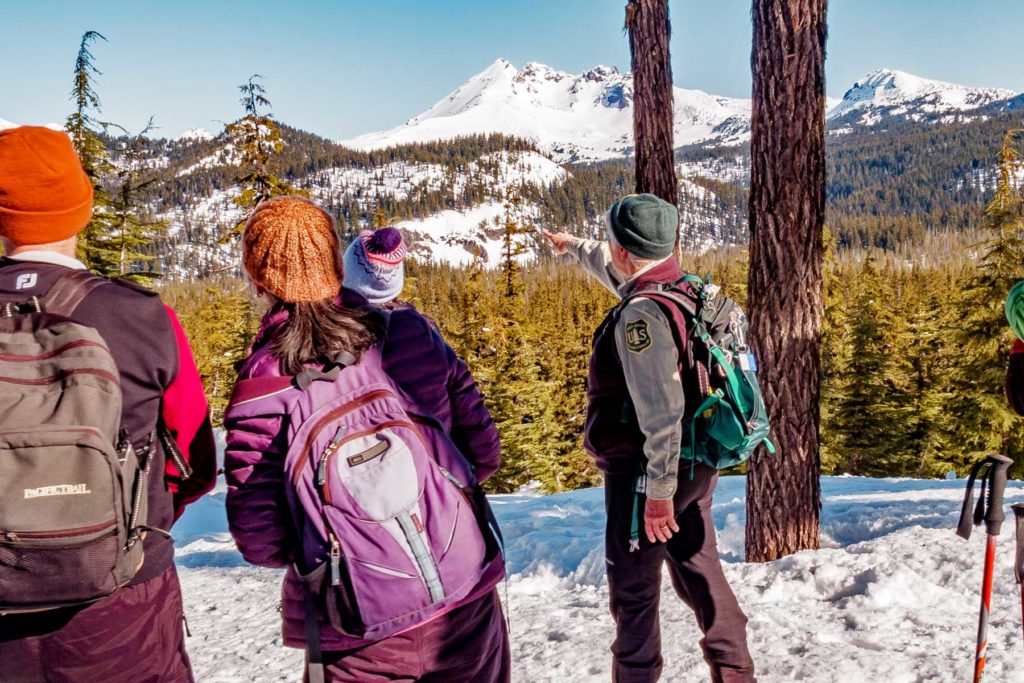
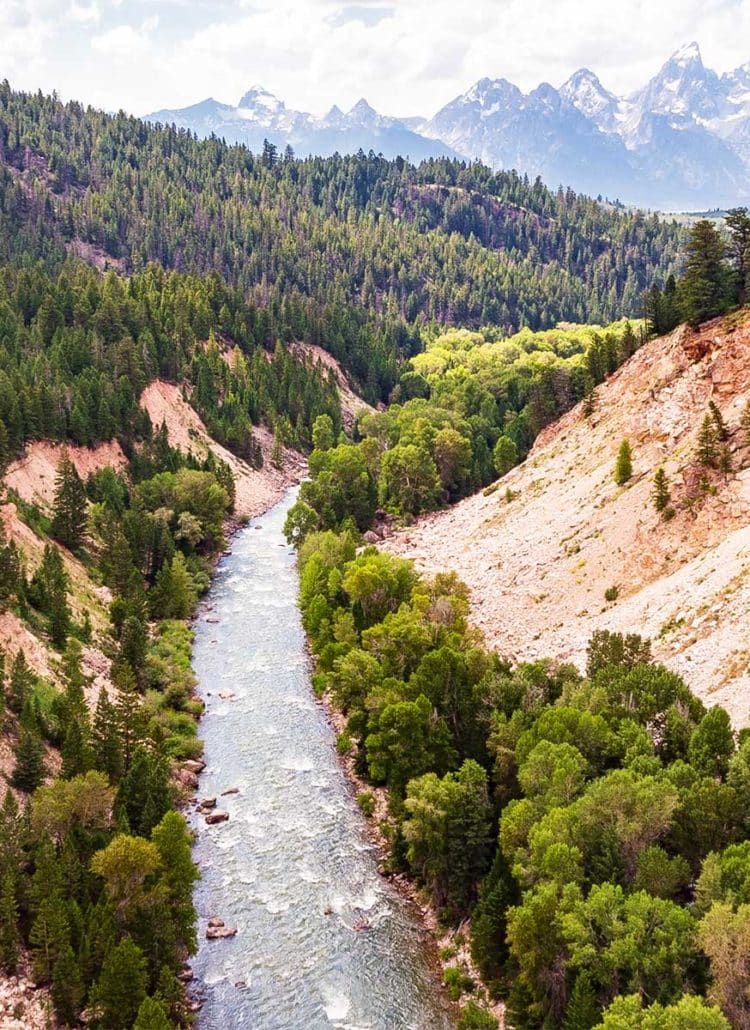
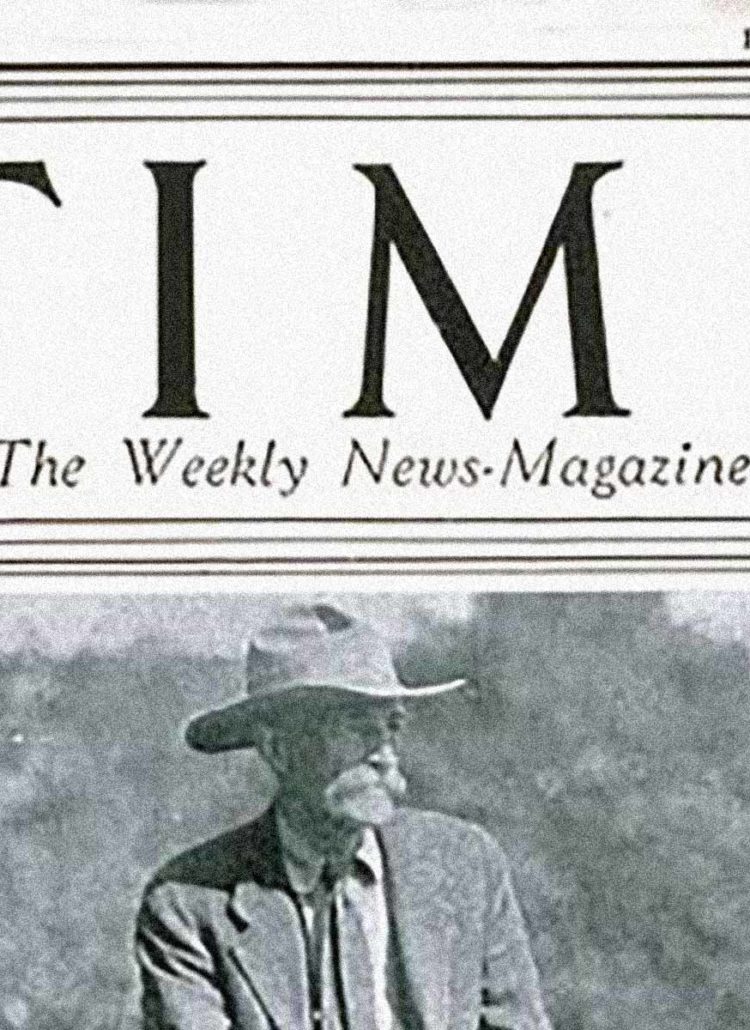
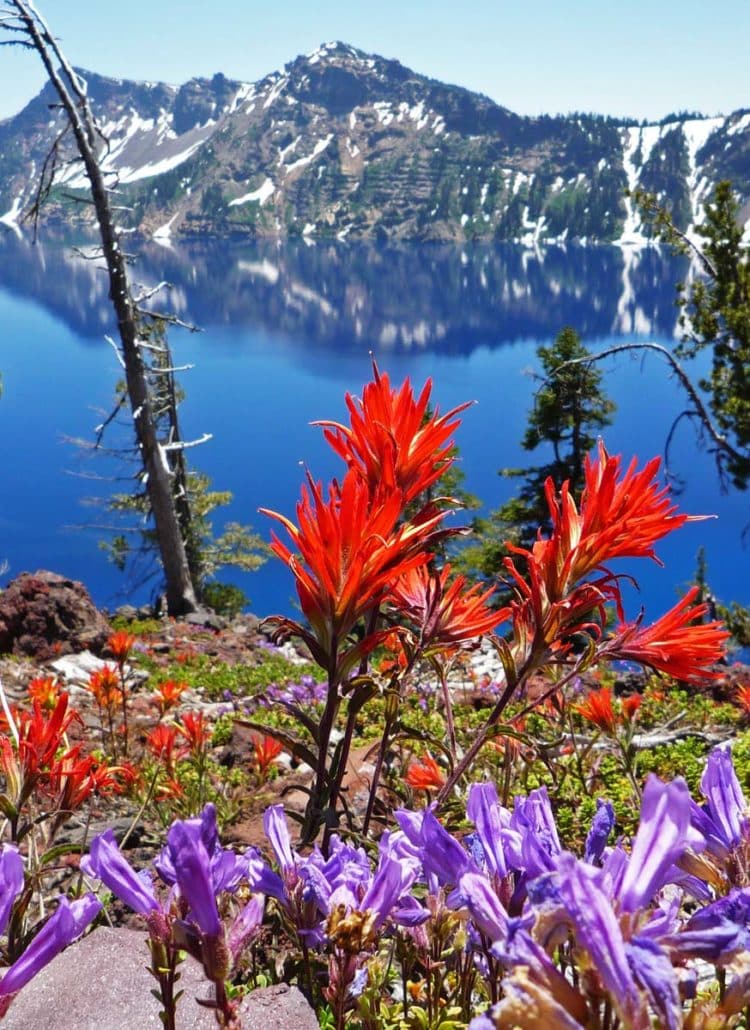
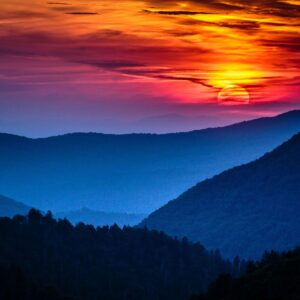

Leave a Reply